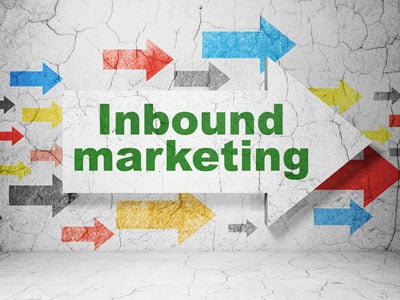 What type of marketing are you doing for your organization? Are you focused on traditional outbound methodologies, or have you embraced the inbound marketing method? Perhaps you are using an integrated approach that utilizes the best of both worlds. You may be thinking, what's the difference? Marketing is marketing, right?
What type of marketing are you doing for your organization? Are you focused on traditional outbound methodologies, or have you embraced the inbound marketing method? Perhaps you are using an integrated approach that utilizes the best of both worlds. You may be thinking, what's the difference? Marketing is marketing, right?
The Difference between Traditional and Inbound Marketing
If the difference between inbound and traditional marketing had to be summed up in just one word, that word would be "perspective".
Traditional marketing reaches out to a large audience with a basic marketing message. Forms of traditional marketing include things like television commercials, print ads, direct mail, or cold calling.
These methods admittedly have their place in the marketing world, but they share one thing in common. They are all interruptive. They reach out to grab an audience that may or may not be receptive to being grabbed.
On the other hand, inbound marketing is not interruptive. It is about building a relationship with a target audience by providing relevant, engaging, and compelling information. Inbound marketing includes such things as:
- content such as blogs, case studies, ebooks, etc
- engaging and share worthy video
- social media posts & engagement
- opt-in email campaigns
- mobile marketing
- opt-in SMS marketing
- influencer marketing, and so on.
Entrepreneur notes about the change of perspective needed for effective inbound marketing:
"You can no longer rent your way to consumer attention, you need to earn it. Instead of dreaming up new ways to interrupt your way into your prospects' lives, invest in ways to engage them meaningfully with an inbound experience."

The Fundamentals of Inbound Marketing
Hubspot, a recognized global leader in the inbound space, defines the four fundamental processes that must occur for inbound marketing to be successful. Inbound marketing aims to:
- Attract
- Convert
- Close
- Delight
While volumes have been written about each of these steps, all inbound marketing techniques fall into one or more of these buckets.
Attract: Common steps that you take in the attraction phase include:
- Identifying your target audience
- Creating buyer personas who are fictional, but based on data you have gathered
- Creating content that is specifically aimed at those buyer personas in the form of items like blog posts, whitepapers, ebooks, good SEO practices, optimized webpages, and social media posts
Convert: In the conversion phase, your goal is to turn traffic that you have already attracted into leads. You can do this using:
- Fill in forms
- Targeted calls to action
- Campaign-specific landing pages
- Capture of consumer data into a centralized database
Close: In the close phase, your goal is to move your client along in the sales funnel. Lead scoring and lead nurturing happen in this phase. Using the information you have captured about your lead, your next steps include actions such as email drip campaigns, marketing automation, and closed-loop reporting. As your client makes his or her way down to the bottom of your sales funnel, sales often occur.
Delight: The delight phase is all about maintaining a relationship you have already built. Inbound marketing does not stop with the sale. Rather, it is a continuous, ever-evolving conversation you maintain with clients. By continuing to provide relevant, meaningful content for your clients, you build trust, loyalty, and repeat customers.
Why You Need an Inbound Marketing Agency
As you can see, inbound marketing is made of many moving parts. While it is often more cost-effective than traditional marketing methods, it is also considerably more time-intensive. And, to do it as efficiently as possible, skill and expertise are required.
For instance, knowing that you need to have a strong social media presence is not the same thing as actually taking the time to build that presence. Similarly, deciding to use PPC campaigns does not necessarily mean you are choosing the right keywords and optimizing your chances of success. Having a deep understanding of how each piece of the inbound marketing puzzle fits together is essential to a well-designed strategy.
If you lack the time or the expertise to handle inbound marketing, take heart. You do not have to miss out on its benefits. You can work with an inbound marketing agency that specializes in digital marketing methods.
Connection Model, a certified Hubspot partner, has a deep bench of inbound marketing talent to help you reap the benefits of an integrated strategy. Contact us today to begin a conversation about how to best use inbound marketing for your business.
No comments:
Post a Comment